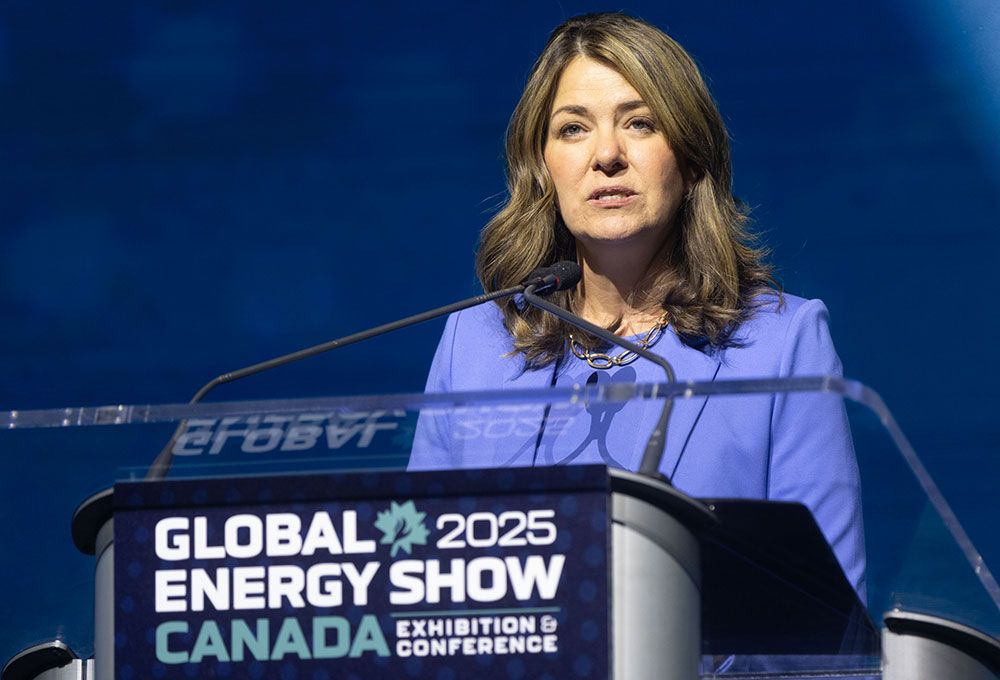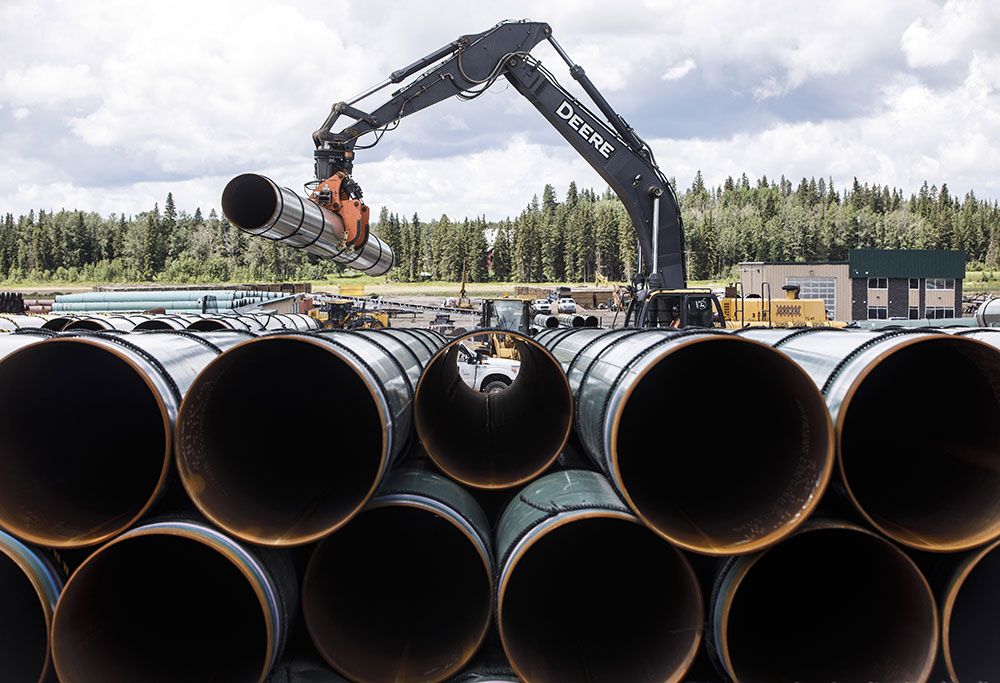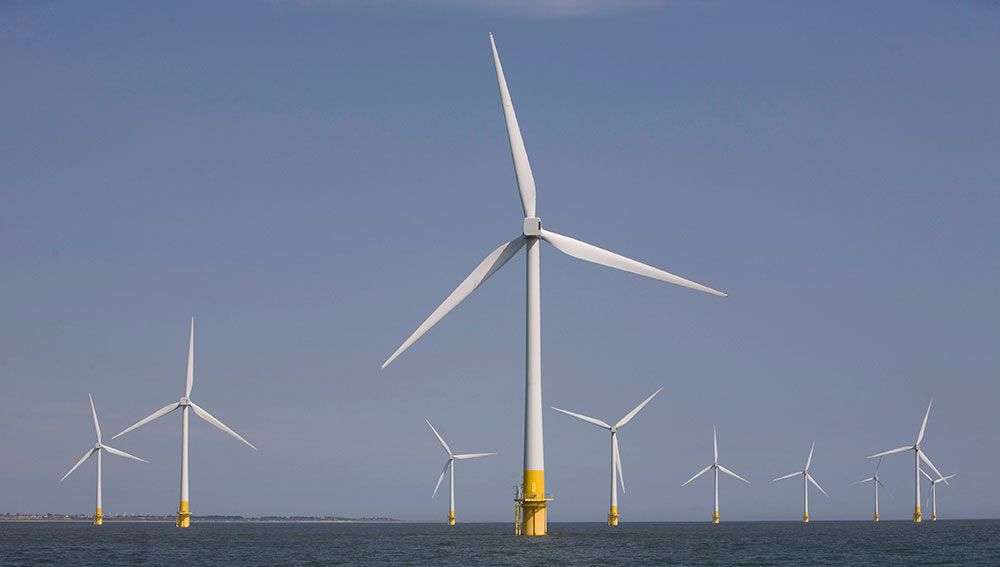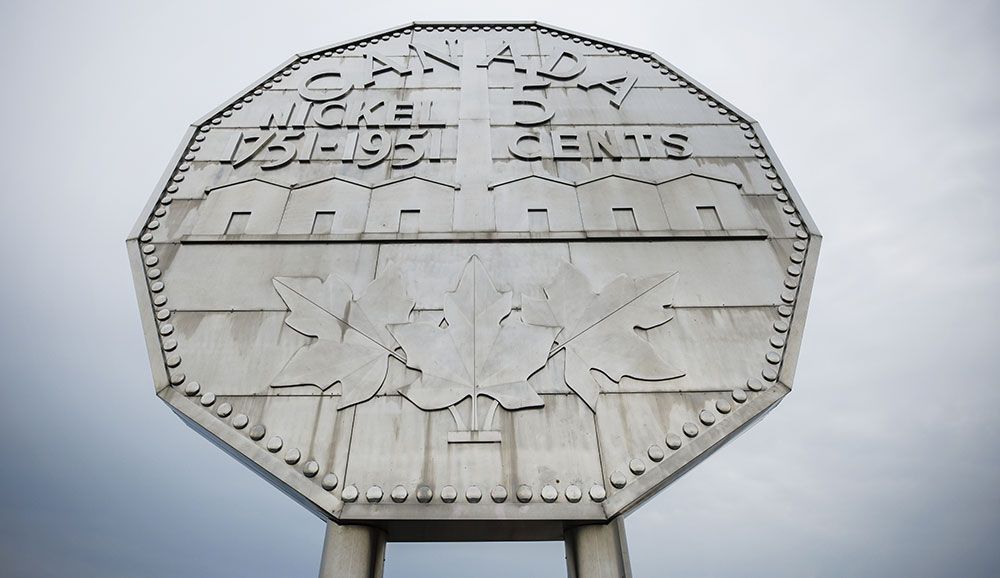
The first major projects of the Canadian government’s signature nation-building initiative are likely to be drawn from five key areas that have emerged as “shared priorities” between Ottawa and the provinces, according to a senior government source with knowledge of the government’s current thinking.
The five areas — called the Western and Arctic Corridor, the Eastern Energy Partnership, Critical Minerals Pathways, the Next Stage of Nuclear and Export Diversification Infrastructure — were among those discussed and flagged as areas of common ground during a first ministers’ meeting in June, said the source, who asked not to be identified because they were not authorized to speak publicly about the discussions.
That meeting included provincial and territorial leaders, Prime Minister Mark Carney and senior federal ministers Dominic LeBlanc, Tim Hodgson and Chrystia Freeland.
Before any projects receive a national-interest designation, more consultations will be required, the source said. Ottawa is preparing to meet with Indigenous leaders to discuss the projects later this month.
“We need to sort of go away and talk to the provinces and territories again, talk to Indigenous partners and Indigenous people; that’s super important and that’s a priority in July. You’ll see the PM is setting up summits with rights holders,” the source said, adding that the federal and provincial governments will continue discussions with proponents on feasibility and specific projects that could be advanced under Bill C-5.
The Carney government hopes to supercharge Canada’s economic growth and mitigate damage from tariffs levied by the United States by streamlining federal approvals for major projects deemed to be of national importance under new provisions laid out in Bill C-5, which passed Parliament at the end of June.
Provincial and territorial premiers were invited to submit project ideas, though the federal cabinet alone will decide which projects to fast-track, based on factors such as whether the proposal strengthens Canada’s economy or security, the likelihood of it being successful and whether it advances the interests of Indigenous peoples or contributes to clean growth.
A spokesperson for the privy council office declined to say when specific project names would be announced, but said Bill C-5 requires consultations with Indigenous peoples, provinces and territories, and that a 30-day notice be published in the Canada Gazette before a potential national interest project can be designated.
The Western and Arctic Corridor
One proposal that has gained momentum among the Western premiers is an economic corridor connecting British Columbia’s northwest coast through the Prairies to Hudson’s Bay, eventually linking by road to an Arctic port in Grays Bay, Nunavut.
Western premiers in May pledged to begin planning port-to-port-to-port infrastructure, including roads, rail, power generation, transmission and pipelines, which could help deliver more energy, critical minerals, agricultural goods and manufactured goods to tidewater for export to both Asian and European markets.
The most valuable and contentious component of the corridor would be the construction of a new oil export pipeline, potentially paired with a major carbon-capture project in the oilsands tied to the Pathways Alliance organization.

Alberta Premier Danielle Smith said she’s actively courting private investors to build a new pipeline to the West Coast and has publicly touted a route terminating at an expanded Port of Prince Rupert — a deep-water port on B.C.’s northwest coast — where some proponents hope to see crude oil, ammonia and critical minerals added to an already growing list of exports to Asia.
“Alberta is very seized, obviously, with the idea of having a private-sector pipeline,” the senior government source said. “We have been pretty clear that if one comes forward and it is bringing the lowest price and the lowest cost and, crucially, the lowest carbon products to market, it will be considered the same way that any project would.”
B.C. Premier David Eby has not outright rejected the idea, though he has publicly said he opposes public funding for a new oil pipeline.
Carney on Saturday said it’s “highly, highly likely” that an oil pipeline will be on Ottawa’s major project list, adding that he expects the private sector will be advancing a proposal.
“I would think, given the scale of the economic opportunity, the resources we have, the expertise we have, that it is highly, highly likely that we will have an oil pipeline that is a proposal for one of these projects of national interest,” the prime minister told the Calgary Herald.
No dollar figure for a new pipeline has been floated, but the Alberta government has argued that Ottawa should avoid taking the approach it took when constructing Canada’s last pipeline to tidewater, the Trans Mountain pipeline expansion (TMX) project, the budget for which ballooned to more than $34 billion at completion in 2024 from $7.4 billion in 2018, when the former Justin Trudeau government purchased the project.

Instead, the Smith government has been urging Ottawa to make regulatory changes to encourage a private proponent to step forward, changes the province has said could have shaved between $6 billion and $11 billion dollars from TMX’s final price tag.
The debate over the pipeline has dominated public discussion, but a key focus of the corridor is likely to be critical minerals and the build-out of infrastructure to support mining, processing and exports, including roads, clean power generation, transmission lines and grid connections, such as a proposed 750-kilometre Yukon-B.C. intertie.
Some large-scale mining and resource project proposals in the North and in remote areas of B.C. and the Prairie provinces have languished for years, with proponents arguing that private investment would flow if strategic investments in infrastructure were made.
Canada currently ranks “near the bottom” in terms of mine development timelines, Prospectors & Developers Association of Canada director Jeff Killeen said, with it sometimes taking more than 25 years for a viable project to go from initial discovery to production.
“Part of that extensive timeline comes from the infrastructure gap that we’re talking about right now in many parts of the country,” he said.
The Next Stage of Nuclear
The Western and Arctic corridor also overlaps with another key category of major projects, the so-called next stage of nuclear, since boosting Saskatchewan’s uranium ore mining sector could increase exports while simultaneously supporting Ottawa’s ambitions for expanding the next generation of nuclear technologies.
Ontario is currently constructing the first commercial-scale small modular reactor project among the Group of Seven industrialized nations, and provinces such as Saskatchewan, Alberta and New Brunswick are hoping to follow suit with the help of Ontario Power Generation Inc.
There are also proposals to refurbish Canada’s aging Candu reactor technology that could be fast-tracked under Bill C-5.
Eastern Energy Partnership
What was initially pitched as a way to reduce the reliance of some Atlantic provinces on coal and energy imports from the U.S. — something exacerbated by the shutdown of Nova Scotia’s offshore natural gas production in 2018 — has blossomed into bigger plans, with the prospect of tapping federal money and cutting red tape to draw private investment.
Leaders in Atlantic Canada now hope Ottawa’s nation-building push will galvanize efforts to link power infrastructure across the region and country, enabling new generation projects with enough capacity to export excess electricity to other Canadian provinces and New England states at a profit.
The pitch from the Atlantic provinces under the Eastern Energy Partnership has an estimated initial cost of $8 billion, and it has the support of New Brunswick, Nova Scotia and Prince Edward Island, according to Atlantica Centre for Energy, a non-profit organization that advocates for energy opportunities in the region.
Some of the proposals being pitched, which span electricity, nuclear and natural gas, also involve Quebec. But whether that province will be on board remains to be seen, said Larry Hughes, a professor of electrical and computer engineering at Dalhousie University, who is closely following developments.
Among the proposals is Nova Scotia’s Wind West initiative, which would boost development of offshore wind turbines to 66 gigawatts of capacity within 10 years, or 13 times the previous goal for 2030. A cross-country cable is envisioned to carry excess electricity to other markets, and the undertaking would require government and private funding.
Nova Scotia Premier Tim Houston said the project could supply 27 per cent of Canada’s electricity needs.

New Brunswick Premier Susan Holt has endorsed the idea that her province could become an electricity hub for transmission of energy across Canada and into the U.S., including hydro from Newfoundland and Labrador.
A separate New Brunswick proposal would give Atlantic provinces access to natural gas from Western Canada through the extension of a pipeline that currently terminates in Quebec City.
If Quebec were to allow it, the natural gas pipeline could be extended into New Brunswick, Hughes said. From the Port of Belledune in northern New Brunswick, it could be further extended to Fredericton and connect with the existing pipeline system, Michelle Robichaud, president of the Atlantica Centre for Energy, said.
“In some ways, the Eastern Energy Partnership is a new idea. In other ways, it is revisiting old plans and incorporating existing ones,” she said.
Robichaud said that beyond the proposed offshore wind energy in Nova Scotia, new nuclear power from New Brunswick and hydro from Newfoundland and Labrador, the growth potential of onshore wind has already been identified in all four Atlantic provinces.
“All of the Atlantic provinces require additional generation and there is opportunity in exporting energy, whether it’s through transmission lines or as hydrogen, ammonia or other clean fuels,” she said.
Eastern premiers are also hoping that Canada’s renewed interest in strengthening ties with the European Union could facilitate the build-out of a hydrogen sector, leveraging the region’s clean electricity to produce green hydrogen, which can then be converted into ammonia for long-distance shipping to markets such as Germany.
“It’s been pretty obvious that the EU is a partner that we’re looking to get closer to, so if there’s a way that we can work on making sure that our Atlantic provinces are well-equipped to send resources to Europe, that’s important,” the senior government source said.
Critical Minerals Pathways
The Carney government has said the world is bullish on Canada’s potential to supply critical minerals, so projects that capitalize on this opportunity are likely to draw attention as part of the nation-building initiative.
The Ontario government’s proposed multi-billion-dollar investment in the mineral-rich Ring of Fire region looms large on the list. Premier Doug Ford has put developing the vast region at the top of his priority list and is looking to speed assessments of some key components of the project under Bill C-5, including portions of a three-part road network proposed to provide access to the Ring of Fire.
But Ottawa will also be looking at other mines and projects currently in the regulatory pipeline, as well as investments along the entire value chain for critical minerals, including midstream processing, manufacturing and recycling.
Sector watchers warn that many early-stage mineral projects struggle economically because they must export their output for processing. In some cases, midstream processing or refining is essential for turning marginal or high-cost mining operations for minerals such as lithium and rare earths into economically viable projects.
As a result, governments may want to prioritize investment in infrastructure and mining projects close to where midstream capacity already exists, Killeen said, pointing to the concentration of smelters, refineries and mills in Sudbury, Ont., the country’s only copper smelter in Rouyn-Noranda, Que., and the massive zinc and lead smelting and refining complex in Trail, B.C.

“There hasn’t been a new smelter developed in Canada in decades,” he said. “There’s only a few pins in the map in Canada where you take raw material out of a mine and turn it into some further developed, value-added product. If we can fill in that midstream processing gap, that’s a big part of building up the strategy that we want.”
Export Diversification Infrastructure
The final category could include two broad types of projects: energy and natural resource infrastructure, and transportation projects such as roads and railways, according to the source familiar with the government’s thinking.
The hope is these projects will create jobs while helping Canada’s exports reach different trading partners.
“None of these (categories) are one project; they’re all kind of buckets,” the source said. “There could be an infrastructure ecosystem, not just building one project but building something that is a network that gets from Point A to customers in Canada or to customers elsewhere.”